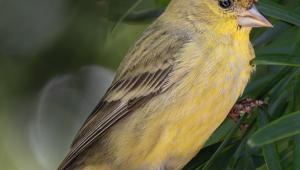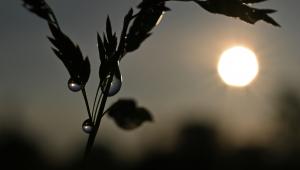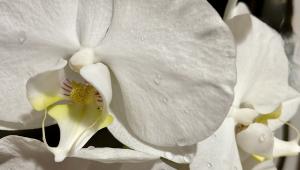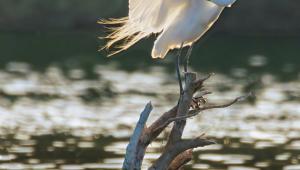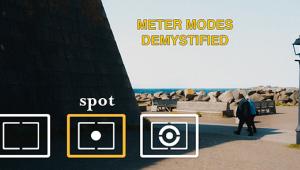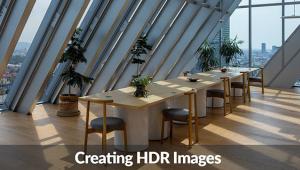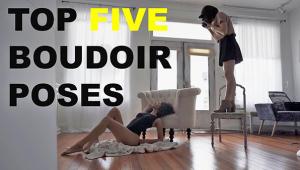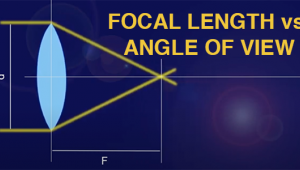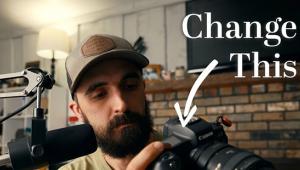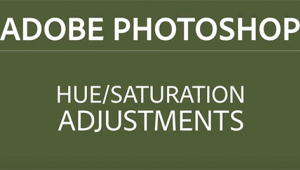Help! Page 2
Six-16 Exposures
Q. I recently acquired a Kodak Six-16 camera. While I know where I can purchase the proper film for it, I do not know how to properly expose the film. I am an amateur photographer and have only really worked with Polaroid instant cameras and digital cameras.
Zachary Langer
via Internet
A. You don't say which version of the Kodak Six-16 you have. There are box models such as the Six-16 Brownie introduced in 1933, a Brownie Target Six-16 in `46, and a smaller, more modern rounded-corner metal version with an eye-level finder called the Six-16 Brownie Special. None of these have any aperture or shutter speed adjustments, you just load the film and shoot in sunlight and they usually get quite decent images with ISO 100 film. However, if yours is a folding rollfilm model with adjustable apertures and shutter speeds for proper exposures you can just use the Sunny 16 rule. In bright sunlight, set the lens aperture at f/16 and the shutter speed equivalent to the ISO speed of the film being used. There are a couple of labs that specialize in working with older film sizes. Two I know of are: Film for Classics (Box 486, Honeoye Falls, NY 14472; (585) 624-4945; www.filmforclassics.com) and Vermont Color Photographic Craftsmen (PO Box 260, Bennington, VT 05201; (802) 442-6371). Contact the lab before actually sending the film for processing to determine whether they can still handle your film size. I know they do work with 620 and other old sizes of roll film. We hope you enjoy using your old camera.
ID That Lens
Q. I presently have a camera lens with the following information on it: QTII f=500mm 1:8, Lens No: 866323, made in Korea. I have no type documentation whatsoever relating to said lens. Further, I have no idea who manufactured said lens. I've had this lens for many moons and I'd like to use it properly but at present I'm not really sure how to go about doing it.
Billy Reese
via Internet
A. Your lens with f=500mm 1:8 engraving on the front indicates that it is a 500mm prime telephoto lens with a focal length of 500mm, and a maximum speed of f/8. There are two types of 500mm lenses, a prime lens and a reflex mirror lens. A reflex lens has just one fixed aperture, f/8 in this case, so you have to adjust exposures by varying the shutter speed. Looking at the front, a mirror lens has a conical circular mirror plus a round spot in the middle. I really cannot further identify the lens from the brief data you provided. I'm assuming it has a rear mount measuring about 2" in diameter, thus it probably was intended for use with a 35mm camera, but it might have a slightly larger rear mount, indicating it was for use on a medium format camera. Is the rear mount threaded, or does it have a bayonet mount? You might be able to bring it to a camera dealer to see if they have old camera bodies that will help you determine which camera it is for.
3D Developing
Q. I own a model #N8000 Nishika 3D 35mm camera I purchased some years ago. My question: Do you develop 3D film from this camera? If so, what are the charges to do so? If not, can you tell me if you know of any company who does?
Harold J. Daigle
via Internet
A. Processing and printing 35mm film exposed in old two-, three-, or four-lens 3D cameras is only being done by a few mail-order labs these days. Here are two that other 3D enthusiasts have told us about, but we have no personal experience using them. I suggest you contact them before actually sending any exposed film to them for processing and 3D printing. The website for the first firm indicates it takes 2-3 weeks for processing and the cost is $36-$48, depending upon whether it's 24- or 36-exposure film and the number of images on the roll to print. The contact info is: CLIK 3D, Unit 18, 3909 Witmer Rd., Niagara Falls, NY 14305; (888) 262-8682; http://click3d.com/pricelist.htm. The other firm is Snap 3D, 2255B Queen St. East, Ste. 122, Toronto, Ontario M4E 1G3, Canada; (416) 850-1972; www.snap3D.com. I believe one, or both, should be able to provide the service you seek.
Q. I recently acquired a Kodak Six-16 camera. While I know where I can purchase the proper film for it, I do not know how to properly expose the film. I am an amateur photographer and have only really worked with Polaroid instant cameras and digital cameras.
Zachary Langer
via Internet
A. You don't say which version of the Kodak Six-16 you have. There are box models such as the Six-16 Brownie introduced in 1933, a Brownie Target Six-16 in `46, and a smaller, more modern rounded-corner metal version with an eye-level finder called the Six-16 Brownie Special. None of these have any aperture or shutter speed adjustments, you just load the film and shoot in sunlight and they usually get quite decent images with ISO 100 film. However, if yours is a folding rollfilm model with adjustable apertures and shutter speeds for proper exposures you can just use the Sunny 16 rule. In bright sunlight, set the lens aperture at f/16 and the shutter speed equivalent to the ISO speed of the film being used. There are a couple of labs that specialize in working with older film sizes. Two I know of are: Film for Classics (Box 486, Honeoye Falls, NY 14472; (585) 624-4945; www.filmforclassics.com) and Vermont Color Photographic Craftsmen (PO Box 260, Bennington, VT 05201; (802) 442-6371). Contact the lab before actually sending the film for processing to determine whether they can still handle your film size. I know they do work with 620 and other old sizes of roll film. We hope you enjoy using your old camera.
ID That Lens
Q. I presently have a camera lens with the following information on it: QTII f=500mm 1:8, Lens No: 866323, made in Korea. I have no type documentation whatsoever relating to said lens. Further, I have no idea who manufactured said lens. I've had this lens for many moons and I'd like to use it properly but at present I'm not really sure how to go about doing it.
Billy Reese
via Internet
A. Your lens with f=500mm 1:8 engraving on the front indicates that it is a 500mm prime telephoto lens with a focal length of 500mm, and a maximum speed of f/8. There are two types of 500mm lenses, a prime lens and a reflex mirror lens. A reflex lens has just one fixed aperture, f/8 in this case, so you have to adjust exposures by varying the shutter speed. Looking at the front, a mirror lens has a conical circular mirror plus a round spot in the middle. I really cannot further identify the lens from the brief data you provided. I'm assuming it has a rear mount measuring about 2" in diameter, thus it probably was intended for use with a 35mm camera, but it might have a slightly larger rear mount, indicating it was for use on a medium format camera. Is the rear mount threaded, or does it have a bayonet mount? You might be able to bring it to a camera dealer to see if they have old camera bodies that will help you determine which camera it is for.
3D Developing
Q. I own a model #N8000 Nishika 3D 35mm camera I purchased some years ago. My question: Do you develop 3D film from this camera? If so, what are the charges to do so? If not, can you tell me if you know of any company who does?
Harold J. Daigle
via Internet
A. Processing and printing 35mm film exposed in old two-, three-, or four-lens 3D cameras is only being done by a few mail-order labs these days. Here are two that other 3D enthusiasts have told us about, but we have no personal experience using them. I suggest you contact them before actually sending any exposed film to them for processing and 3D printing. The website for the first firm indicates it takes 2-3 weeks for processing and the cost is $36-$48, depending upon whether it's 24- or 36-exposure film and the number of images on the roll to print. The contact info is: CLIK 3D, Unit 18, 3909 Witmer Rd., Niagara Falls, NY 14305; (888) 262-8682; http://click3d.com/pricelist.htm. The other firm is Snap 3D, 2255B Queen St. East, Ste. 122, Toronto, Ontario M4E 1G3, Canada; (416) 850-1972; www.snap3D.com. I believe one, or both, should be able to provide the service you seek.
- Log in or register to post comments
